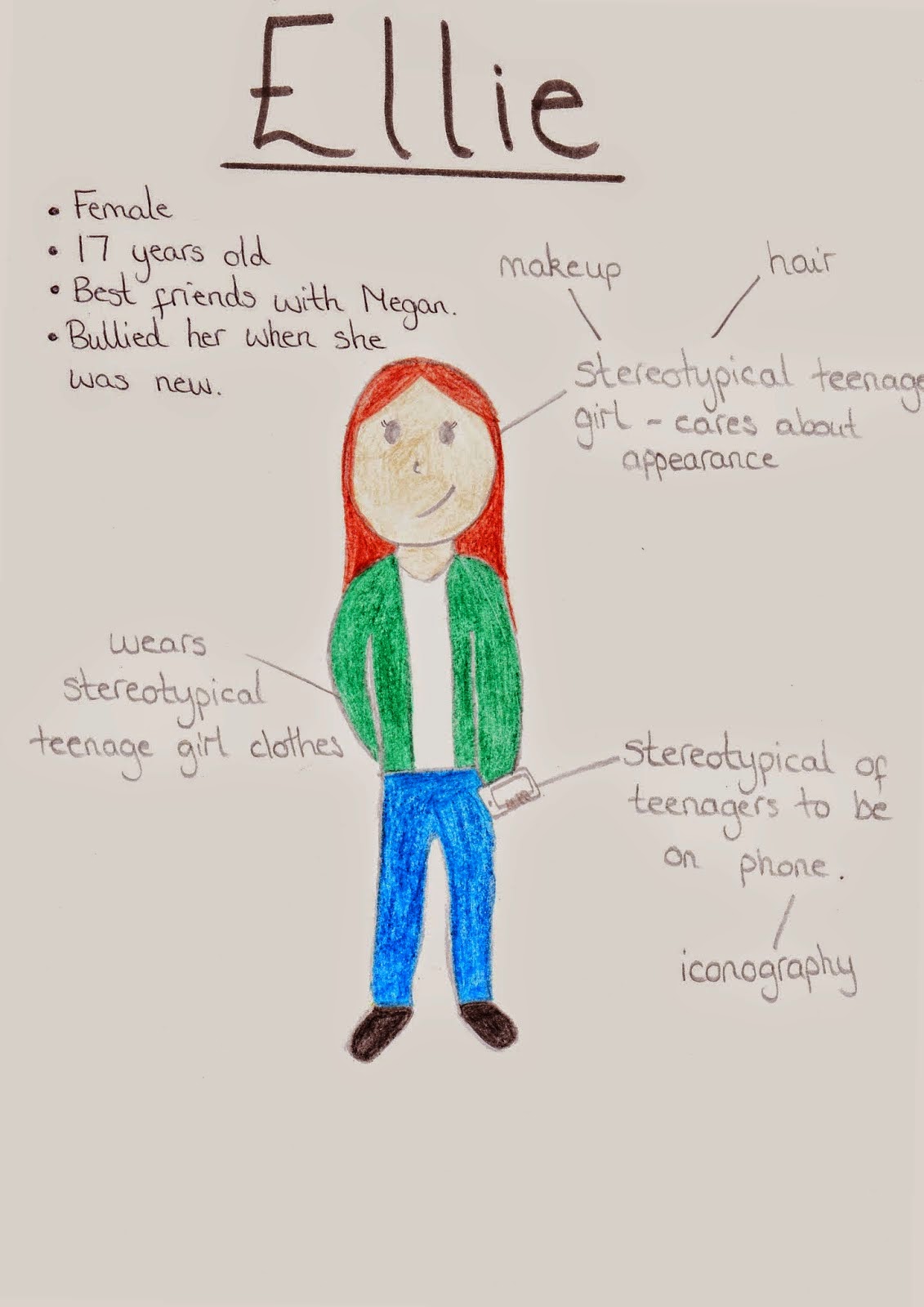Monday, 2 March 2015
Sunday, 1 March 2015
Evaluation 7: What do you feel you have learnt in the progression from the preliminary task to the title sequence?
In our preliminary task, we learnt how to use techniques that we hadn't used before - 180 degree rule, match on action, ellipsis and shot reverse shot. We managed to understand their concept and purpose quite quickly which meant that we were successfully able to use them in our short film. One example of this is when we used match on action, which is where two consecutive shots show the same action from a different angle or camera shot. We used this in our title sequence when we had a long shot of the students walking past and ignoring Megan, and then had a close up of her face in order to connote her confusion about the events. Another example is when we used ellipsis in the opening scene of our teen angst film. As the teacher entered the classroom, we see a long shot of her walking and then we see a mid shot of her sitting at her desk. It is clear that she has walked to her desk and sat down, despite the fact that this was not all shown on screen.
When we were editing our teen angst film, we learnt many editing techniques that we had not known while making our preliminary task. Firstly, we hadn't needed to add music to our preliminary task, however we did on our title sequence. Therefore, we learnt how to add music from iTunes and how to cut it down so that it fitted with the film. Another thing we learnt about editing while making our teen angst film was how to add titles. As well as learning how to insert titles and captions, and change their appearance, we learnt that that the titles were significant and could be used to connote. I learnt it was important to use colours that fits with your demographic and that some titles should be bigger and clearer than others because they are more important, such as the cast and crew names. Lastly, we learnt how to use transitions between shots as well as for the titles. It wasn't necessary to use this for our preliminary task. We used transitions between cuts to suggest a jump in time. For example, while Megan is walking towards the common room, their is a fade transition as she gets closer to the common room, showing a brief jump in time. We also used a swipe transition between the end of the title sequence and the beginning of the opening sequence.

We also carefully planned what props we should use. One prop we decided to use was a pile of papers that Megan carries at the beginning of the title sequence, because this suggests that she is in school. We could also use this prop to emphasise her fall and suggest that she is 'a mess'. Another prop we used was an iPhone, which many teenagers own. Not only was it important to represent the stereotype of a teenager but we also used it to create plot points in the film.
Another thing we learnt was the importance of settings. Settings can help attract an audience if they can relate to your target demographic. When filming our preliminary task, our setting was decided for us. However, the setting of our preliminary task fitted the dialogue and action. Having a school as a setting is a stereotypical convention of teen angst films, and after filming our preliminary task in a school we saw that it could be effective. This setting was relatable for teenagers, who were our target audience. We filmed in a corridor that had lockers in, as well as motivational posters on the wall which further suggests that a high school is the film location.
Furthermore, we did not think about costumes, props or make up when we were making our preliminary task, however we then learnt how important it was, as it can be used for connotations. For example, we planned for Megan to wear mainly red because this connoted danger and made her seem suspicious throughout the film. We wanted the rest of the characters to be wearing 'stereotypical teenage clothing', so we planned costumes, specifically for some of the main characters.

Lastly, we learnt that it is important to get good quality footage. In our preliminary task, we found that we had some minor issues with the sound which we could not change. Therefore, we learnt that it is best to film in a place where there will be no background noise. We also learnt if footage does not seem good enough, you should refilm it in order to get the best quality.
Subscribe to:
Comments (Atom)

